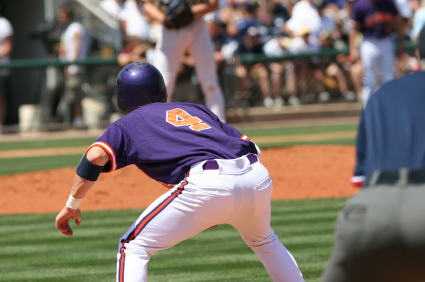By Ethan Guevin
The Situation: There is a runner on 1st and one out with the 8-hitter up. The batter has a 1-0 count. A righty is on the mound. He has yet to show much of a move over to 1st base and the coach has clocked his delivery to home plate to be around 1.4-1.45 seconds.
The Play: The runner on 1st , a third baseman with average speed, picks up the signs from his 3rd base coach—a hit-and-run is on! The pitcher comes set and holds. The runner at 1st starts to get antsy. The pitcher initiates his first movement, and the runner takes a step towards second before realizing that the righty has picked over to 1st base.
The Outcome: The runner at 1st tries to scramble back, but knows he is doomed. Despite the throw being head height to 1st, the first baseman has plenty of time to slap the tag down and get the overly aggressive runner at 1st for the second out of the inning. The batter grounds out to end the inning.
What went wrong?
Does this situation sound familiar? Many young base runners feel a lot of pressure or get impatient when a hit-and-run is put on. In reality, you are not expected to steal the base, so most of the pressure should be felt by the hitter. To explain where the runner erred and why the mistake could be a costly one, let’s look at why coaches call a hit and run and what impact it has on run production.
A hit-and-run is put on as a calculated risk. The play is an effort to try to generate offense and at the very least, move the runner up with a productive out. The failure to move a runner up from 1st to 2nd with 1 out costs a team on average approximately 0.3 runs per game, so getting the runner to 2nd safely is a big deal. By getting picked off, you can bet that the runner is costing the team even more than an average of 0.3 runs.
Hit-and-runs are riskier than a sacrifice bunt, but the potential rewards are much greater. Some risks: the batter could swing and miss, the pitch could be a poor pitch to hit, the opposing team could pitch out, and the list goes on. One thing that should never happen, however, is the runner getting picked off as he did in this play. You should think of your goal on a hit-and-run as getting a head start rather than stealing the bag. The coach is betting that the batter can hit the ball on the ground and does not expect you to steal the base outright, should the hitter fail at his task. For this reason, when a hit-and-run is put on, you should not be in a hurry to get the best jump in the world. You need to simply do your job by getting an average jump and letting the hitter do his job. In fact, you should be conservative enough in your lead and jump so that even a balk move should not pick you off. While hit-and-runs are risky, the risk should come from what happens on the pitched ball and never on the runner getting picked-off.







